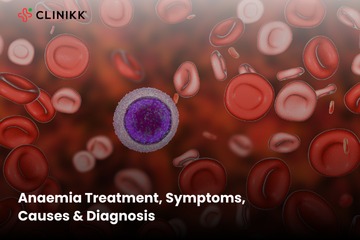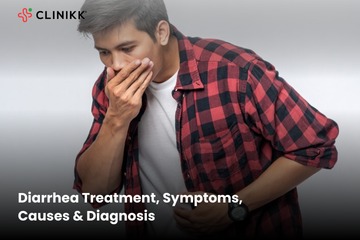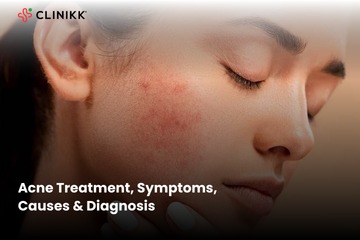Dermatitis refers to inflammation of the skin, which can result in a range of symptoms like redness, itching, swelling, & skin lesions. It is often caused by contact with irritants or allergens, but also be due to genetic factors, infections, or autoimmune conditions.
Dermatitis is a prevalent skin condition characterised by inflammation and irritation, often resulting in itchy, dry skin or a rash. It can also manifest as skin blistering, oozing, crusting, or flaking. Three common types of dermatitis include atopic dermatitis (eczema), contact dermatitis, and seborrheic dermatitis.
Dermatitis is not contagious but can be intensely uncomfortable. Regular moisturising is essential for managing symptoms. Treatment may also involve the use of medicated ointments, creams, and shampoos to alleviate inflammation and soothe the skin. Early intervention and proper skincare routines are key to controlling dermatitis effectively.
Types of Dermatitis
- Atopic Dermatitis (Eczema): Common in children and characterised by dry, itchy skin that can become red and inflamed. It often occurs in individuals with a family history of allergies, asthma, or eczema.
- Contact Dermatitis: Caused by direct contact with irritants (irritant contact dermatitis) or allergens (allergic contact dermatitis). Symptoms include redness, itching, and sometimes blistering at the site of contact.
- Seborrheic Dermatitis: Affects areas of the skin rich in oil glands, such as the scalp, face (especially around the eyebrows and nose), and upper chest. It causes redness, scaling, and dandruff-like flakes.
- Nummular Dermatitis: Characterized by coin-shaped patches of irritated skin, often on the legs, arms, back, and buttocks. It can be triggered by dry skin, injury to the skin, or certain medications.
- Dyshidrotic Dermatitis (Pompholyx): Affects the palms of the hands, sides of the fingers, and soles of the feet. It causes small, itchy blisters and may be triggered by stress, allergies, or exposure to certain metals.
- Perioral Dermatitis: Affects the skin around the mouth and appears as red, bumpy, or pustular lesions. The exact cause is often unknown but may be linked to topical steroids or oral contraceptives.
Causes of Dermatitis
Allergens: Common allergens include metals (like nickel), latex, certain plants (e.g., poison ivy), cosmetics, and fragrances.
- Irritants: Harsh chemicals, soaps, detergents, and solvents can irritate the skin and lead to dermatitis.
- Genetics: Family history of atopic conditions such as eczema, asthma, or hay fever can increase the risk of developing dermatitis.
- Environmental Factors: Dry or cold weather, humidity, or excessive heat can exacerbate symptoms.
- Stress: Emotional stress or anxiety can trigger or worsen certain types of dermatitis.
What are the symptoms of Dermatitis ?
- Redness: Skin appears red or flushed in affected areas.
- Itching: Often intense itching, which can worsen with scratching.
- Swelling: Skin may become swollen or puffy, especially in acute cases.
- Dryness: Skin may feel dry, rough, or scaly.
- Blisters or Pustules: Some types of dermatitis, like allergic contact dermatitis or dyshidrotic dermatitis, may cause blisters filled with fluid or pustules.
Are You Looking For Doctor Appointment ?
How can Dermatitis be Diagnosed?
Diagnosing dermatitis typically involves a combination of medical history review, physical examination, and sometimes additional tests or procedures to determine the specific type and underlying cause.
- Medical History Review:
- Symptoms: The doctor will inquire about symptoms such as itching, rash, dryness, blistering, or any other skin changes.
- Triggers: Discussion about possible triggers or irritants that may have led to the dermatitis flare-up.
- Personal and Family History: Information on past medical conditions, allergies, and family history of dermatitis or other skin disorders.
- Physical Examination:
- Skin Examination: The doctor will visually inspect the affected areas of the skin to assess the type, severity, and distribution of dermatitis symptoms.
- Skin Type and Color: Examination takes into account the individual’s skin type and color, as symptoms may appear differently based on these factors.
- Additional Tests or Procedures:
- Patch Testing: For suspected allergic contact dermatitis, patch tests may be conducted to identify specific allergens triggering the skin reaction. Small amounts of potential allergens are applied to the skin and monitored for reactions.
- Skin Biopsy: In cases where the diagnosis is unclear or to rule out other conditions, a skin biopsy may be performed. A small sample of skin tissue is taken and examined under a microscope.
- Blood Tests: Occasionally, blood tests may be ordered to check for underlying conditions or allergic reactions that could be contributing to dermatitis.
- Exclusion of Other Conditions:
- The doctor may need to rule out other skin conditions that mimic dermatitis, such as psoriasis, fungal infections, or autoimmune disorders.
- Evaluation of Response to Treatment:
- If the diagnosis is uncertain, response to initial treatments or changes in symptoms with specific interventions can help confirm the diagnosis.
- Consultation with Specialists:
- Depending on the complexity of the case, consultation with a dermatologist or allergist may be recommended for further evaluation and management.
Diagnosing dermatitis is essential for developing an effective treatment plan tailored to manage symptoms, prevent flare-ups, and improve overall skin health. It often involves a collaborative approach between the patient and healthcare provider to identify triggers and establish appropriate management strategies.

Dermatitis Treatment in Bangalore
The treatment of dermatitis focuses on reducing inflammation, relieving symptoms, preventing flare-ups, and addressing underlying causes. The approach may vary depending on the type and severity of dermatitis.
- Avoiding Triggers:
- Identify and avoid irritants or allergens that trigger dermatitis symptoms. This may include certain soaps, detergents, cosmetics, fabrics, metals, or environmental factors like heat or humidity.
- Skin Care Practices:
- Moisturising: Regularly apply moisturisers to keep the skin hydrated and prevent dryness, which can exacerbate dermatitis. Use gentle, fragrance-free moisturisers suitable for sensitive skin.
- Avoid Scratching: Minimise scratching to prevent skin damage and infection. Keep fingernails short and consider using anti-itch creams or cool compresses to relieve itching.
- Topical Treatments:
- Corticosteroid Creams or Ointments: These are commonly prescribed to reduce inflammation and relieve itching. They are available in varying strengths depending on the severity of symptoms and location of the rash. Please note that any medications should be used under the supervision of trained medical professionals/physicians and as per their guidance only.
- Topical Calcineurin Inhibitors: Non-steroidal creams or ointments that suppress the immune response in the skin and help reduce inflammation, especially in sensitive areas like the face or skin folds. Please note that any medications should be used under the supervision of trained medical professionals/physicians and as per their guidance only.
- Antihistamines: Oral antihistamines may be prescribed to relieve severe itching, especially at night, and to help improve sleep quality. Please note that any medications should be used under the supervision of trained medical professionals/physicians and as per their guidance only.
- Medications:
- Oral Corticosteroids: In severe cases or when dermatitis affects large areas of the body, oral corticosteroids may be prescribed for a short period to quickly reduce inflammation. Please note that any medications should be used under the supervision of trained medical professionals/physicians and as per their guidance only.
- Antibiotics: If there is a bacterial infection or open sores due to scratching, antibiotics may be necessary to treat the infection. Please note that any medications should be used under the supervision of trained medical professionals/physicians and as per their guidance only.
- Phototherapy (Light Therapy):
- Controlled exposure to specific wavelengths of light (UVB or UVA) can help reduce inflammation and itching in some types of dermatitis, particularly when other treatments have been ineffective or problematic.
- Lifestyle and Dietary Changes:
- For certain types of dermatitis like seborrheic dermatitis, adjusting diet and lifestyle factors may help manage symptoms. This may include reducing stress, avoiding excessive alcohol consumption, and maintaining a balanced diet.
- Education and Support:
- Patient education on skincare practices, triggers, and self-management strategies is crucial for long-term management of dermatitis. Support groups or counselling may also be beneficial for coping with the emotional impact of chronic dermatitis.
Dermatitis is a common condition that can significantly impact quality of life, but with proper management and avoidance of triggers, symptoms can often be controlled effectively. Seeking medical advice is important for accurate diagnosis and tailored treatment options.
Associated Costs of dermatitis Treatment in Bengaluru
The costs associated with dermatitis treatment in Bengaluru can vary depending on several factors, including the type and severity of dermatitis, the chosen treatment approach, the primary care doctor, and the duration of treatment.
- Consultation Fees:
- Initial consultation with a dermatologist or Primary care doctor healthcare provider for diagnosis and treatment planning. This may range from ₹500 to ₹2000 or more, depending on the clinic and doctor’s experience. Primary care doctors generally offer more affordable consultation fees for routine and common health issues, specialists may be necessary for complex conditions requiring specialised expertise and advanced treatments, which typically come with higher consultation fees reflecting the specialised care provided.
- Medications:
- Topical Treatments: Prescription creams, ointments, or lotions such as corticosteroids, calcineurin inhibitors, or moisturisers. Prices can vary widely, but generic versions may cost between ₹100 to ₹1000 per tube or container, depending on the brand and strength.
- Oral Medications: If oral corticosteroids or antihistamines are prescribed, costs may range from ₹20 to ₹500 per course, depending on the medication.
- Diagnostic Tests:
- Patch Testing: If allergy testing is required to identify triggers, costs may vary based on the number of allergens tested and the laboratory. Prices typically range from ₹1000 to ₹5000 or more.
- Skin Biopsy: If a skin biopsy is necessary, it may cost between ₹2000 to ₹5000 or more, depending on the healthcare facility and the complexity of the procedure.
- Phototherapy (Light Therapy):
- Sessions of phototherapy, if recommended, can range from ₹500 to ₹2000 per session, depending on the type of light therapy used and the clinic..
- Insurance Coverage:
- Depending on the health insurance policy, some costs associated with dermatitis treatment may be partially or fully covered. It’s advisable to check with the insurance provider regarding coverage specifics.
- Miscellaneous Costs:
- Costs related to travel to and from healthcare facilities, parking fees, and any additional supportive care products (e.g., hypoallergenic skincare products) should also be considered.
Choosing Clinikk for dermatitis treatment ensures that patients receive timely care with a dedicated team of primary care physicians and if required, get guided to right specialist services.







